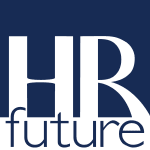Employee resource groups (ERGs) have emerged as an essential tool for fostering inclusion, promoting professional growth, and enhancing employee engagement. ERGs are employee-led groups that unite individuals with shared characteristics, experiences, or interests, such as race, gender, sexual orientation, disability, or veteran status. These groups provide a platform for employees to connect, support one another, advocate for change, and contribute to the organization’s culture.
Launching an ERG program can have significant benefits, including improved retention, increased employee satisfaction, and the creation of a more inclusive work environment. Thoughtful planning, clear objectives, and strong leadership are crucial for success.
1. Understanding the Need for ERGs
Before embarking on the journey of launching an ERG program, it’s important to understand why these groups are necessary in the first place. ERGs provide several important functions within an organization, including:
- Promoting diversity and inclusion: ERGs create a space for employees from diverse backgrounds to connect, share experiences, and advocate for inclusive policies.
- Supporting career development: Many ERGs offer mentorship, networking opportunities, and leadership development programs that help employees grow professionally.
- Enhancing employee engagement: Employees who feel they belong to a community are more likely to be engaged, motivated, and satisfied in their roles.
- Driving organizational change: ERGs can act as a voice for underrepresented groups, providing feedback and advocating for policies that benefit employees and the organization as a whole.
Recognizing the value of ERGs will help you build a strong business case for launching the program, both internally to leadership and externally to employees.
2. Establishing Clear Objectives and Goals
The next step in launching an ERG program is to define its purpose, objectives, and the specific outcomes you hope to achieve. Setting clear goals will help guide the direction of the program and ensure it aligns with the organization’s mission and values.
Some common objectives for ERGs include:
- Fostering a sense of belonging and inclusion: Ensure that employees from diverse backgrounds feel supported, valued, and heard.
- Building leadership skills: Offer leadership opportunities for group members, allowing them to develop key skills such as team management, event planning, and advocacy.
- Improving retention: By offering employees a sense of community and professional development, ERGs can contribute to higher employee retention rates.
- Supporting business growth: ERGs can help businesses connect with diverse customer bases, innovate, and create products or services that reflect the needs of various demographic groups.
Defining your goals early on will help you structure your ERG program effectively, set measurable success metrics, and demonstrate the value of the program to key stakeholders.
3. Gaining Executive Sponsorship and Support
One of the most critical steps in launching an ERG program is securing buy-in from leadership. Executive sponsorship is essential for ensuring that the program receives the necessary resources, visibility, and support to succeed. Without support from top leadership, an ERG program may struggle to gain traction and may not be perceived as a priority within the organization.
To secure executive sponsorship:
- Present a compelling case: Use data, research, and examples from other organizations to demonstrate the positive impact ERGs can have on employee engagement, retention, and overall organizational success.
- Align with organizational goals: Show how ERGs support the organization’s diversity, equity, and inclusion (DEI) goals, as well as its broader business objectives.
- Highlight benefits for leadership: Emphasize how ERGs can help leadership understand employee needs, improve organizational culture, and contribute to innovation and customer relations.
Once you have executive support, it’s important to maintain open lines of communication with leadership throughout the program’s development and implementation.
4. Defining the Structure and Framework
To ensure the success of an ERG program, it is crucial to establish a clear structure and framework for how these groups will operate. This includes defining leadership roles, membership guidelines, and the scope of each ERG’s activities. A well-organized structure helps ensure that the ERGs align with the company’s goals and that they operate efficiently and effectively.
Key components of an ERG framework include:
- Leadership roles: Each ERG should have a leadership team that can provide direction and drive the group’s initiatives. This team may include a chairperson, co-chairs, and various subcommittee heads. Leaders should be passionate about the group’s mission and be skilled in project management, communication, and team building.
- Membership guidelines: While ERGs are typically open to all employees, it’s important to clarify membership criteria, including whether employees need to identify with the group’s focus area (e.g., women in leadership, LGBTQ+ employees) or whether the group is open to allies.
- Clear goals and deliverables: Each ERG should have specific goals that tie back to the broader objectives of the organization, such as hosting professional development events, conducting advocacy campaigns, or fostering mentoring relationships.
- Budget and resources: Ensure that each ERG has access to the necessary resources to accomplish its goals. This may include a budget for events, meeting space, promotional materials, and other resources that will help the ERG thrive.
By establishing a clear structure and framework, you set the stage for ERGs to operate efficiently and contribute meaningfully to the organization.
5. Promoting ERGs Across the Organization
Once your ERG program is ready to launch, it’s time to create awareness and encourage employee participation. Communication is key to ensuring that employees understand the purpose of the ERGs, the benefits of joining, and how they can get involved.
- Internal communications: Use email newsletters, intranet postings, and town hall meetings to announce the launch of the ERG program and encourage employees to sign up. Include success stories, testimonials, and examples of how ERGs can positively impact employees’ careers and personal growth. Implementing employee resource group (ERG) software can streamline communications.
- Inclusive marketing: Make sure that all employees know that ERGs are open to everyone, including allies. This helps build a culture of inclusion and shows that ERGs are not exclusive, but rather aimed at promoting diversity and positive change.
- Events and engagement: Host kick-off events, informational sessions, or webinars to introduce employees to the different ERGs and the value they offer. These events also provide a great opportunity for employees to ask questions and network with potential group leaders and members.
Engagement and visibility are crucial for the success of your ERG program, so make sure to maintain ongoing efforts to promote the program and keep employees informed about ERG activities.
6. Measuring Success and Evolving the Program
As your ERG program grows, it’s important to regularly assess its impact and effectiveness. Set clear key performance indicators (KPIs) that align with the program’s objectives and regularly evaluate whether these goals are being met. Common metrics for measuring success include:
- Employee participation: Track the number of employees who join ERGs and attend events to gauge interest and engagement.
- Impact on retention and satisfaction: Use employee surveys or feedback tools to measure whether ERGs contribute to higher levels of employee satisfaction and retention.
- Business outcomes: Evaluate how ERGs have influenced organizational outcomes, such as improved diversity in leadership, better product innovation, or increased community involvement.
Feedback from ERG members and other employees is invaluable for understanding what’s working and what needs to be improved. Use this feedback to continually refine the program, expand its reach, and ensure it remains aligned with the organization’s goals and evolving needs.
Launching an Employee Resource Group (ERG) program can be a transformative initiative for your organization, helping foster an inclusive culture, support professional growth, and enhance employee engagement. By establishing clear goals, securing executive support, defining a strong structure, and promoting the program effectively, you can create ERGs that will drive meaningful change within your organization. Through continuous assessment and refinement, an ERG program will not only support employees but also contribute to the long-term success and innovation of the business.
Guest writer.
























